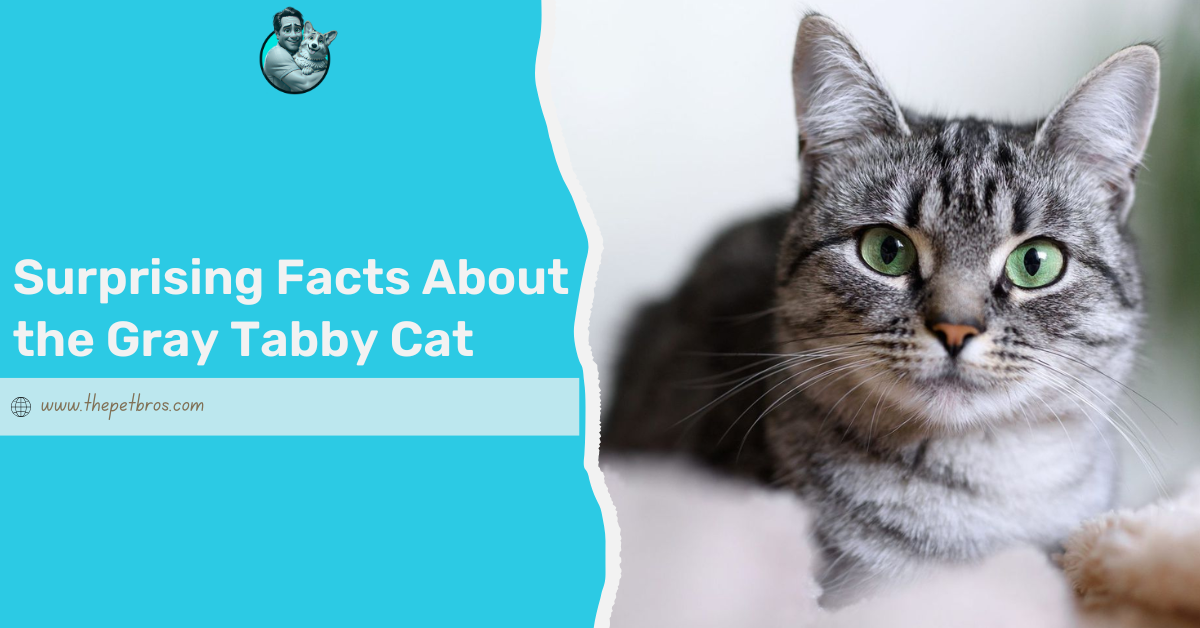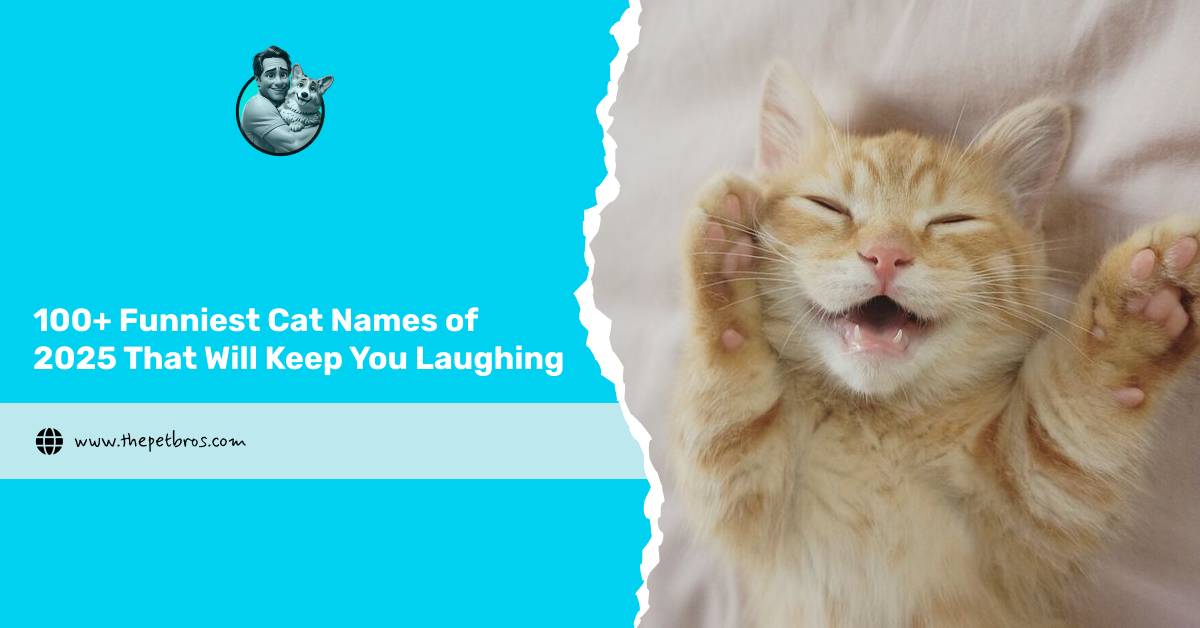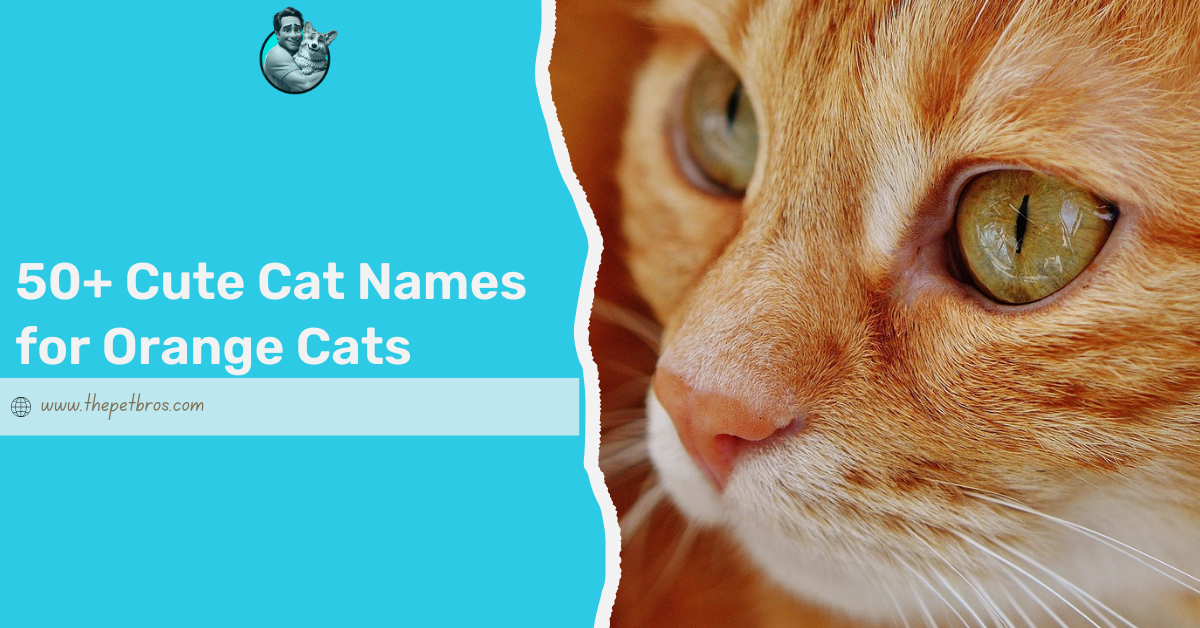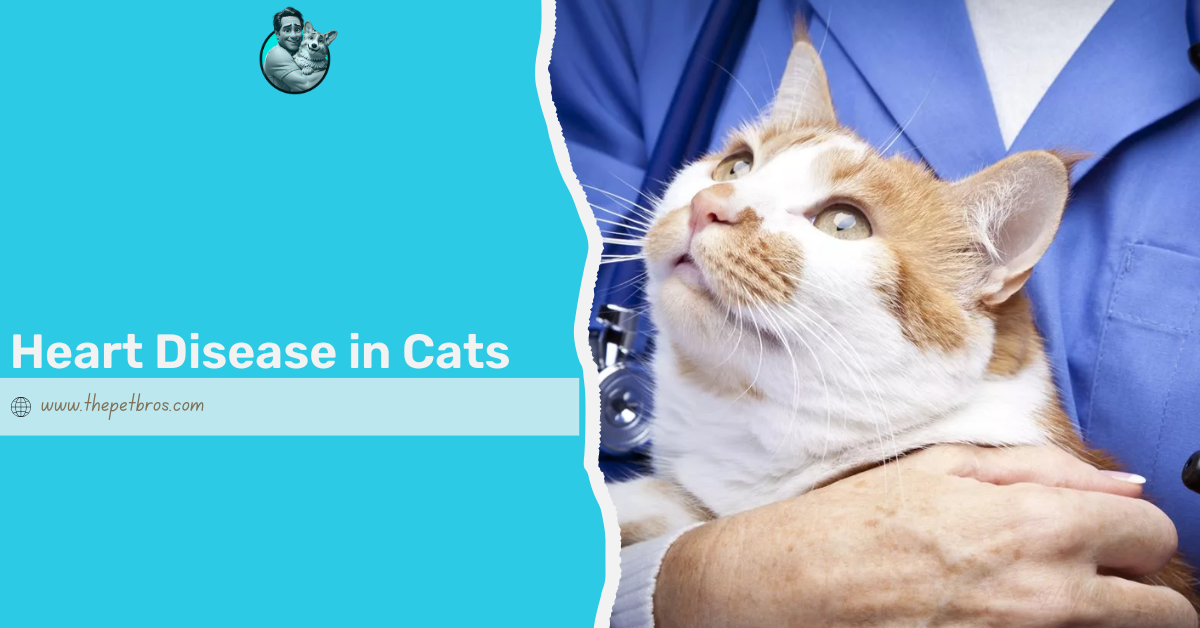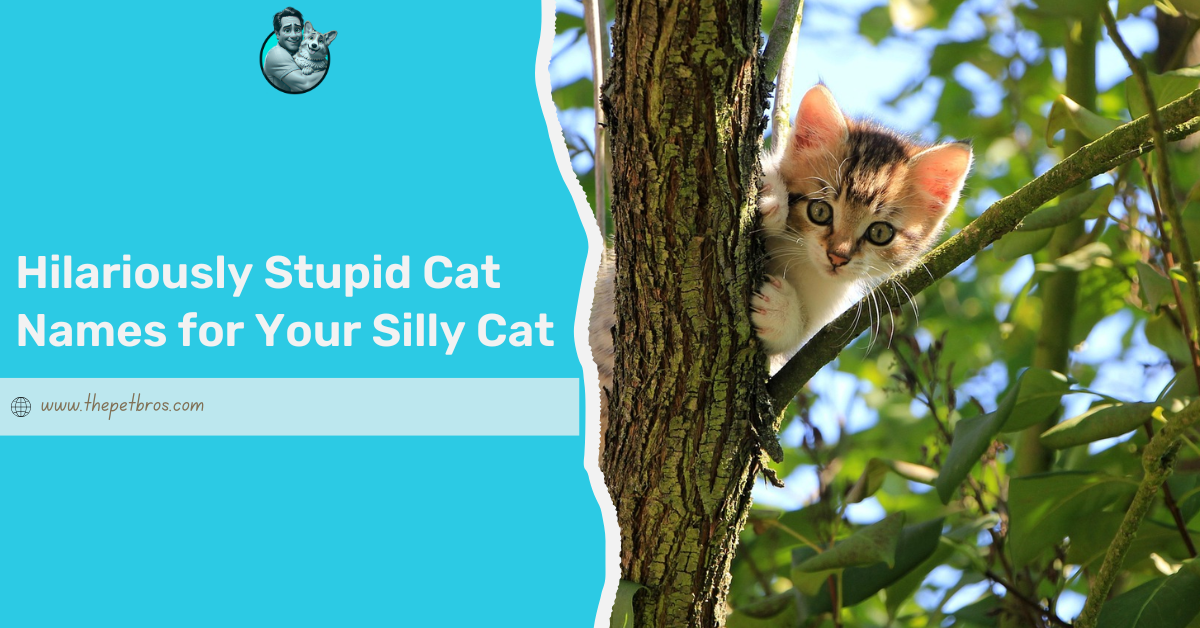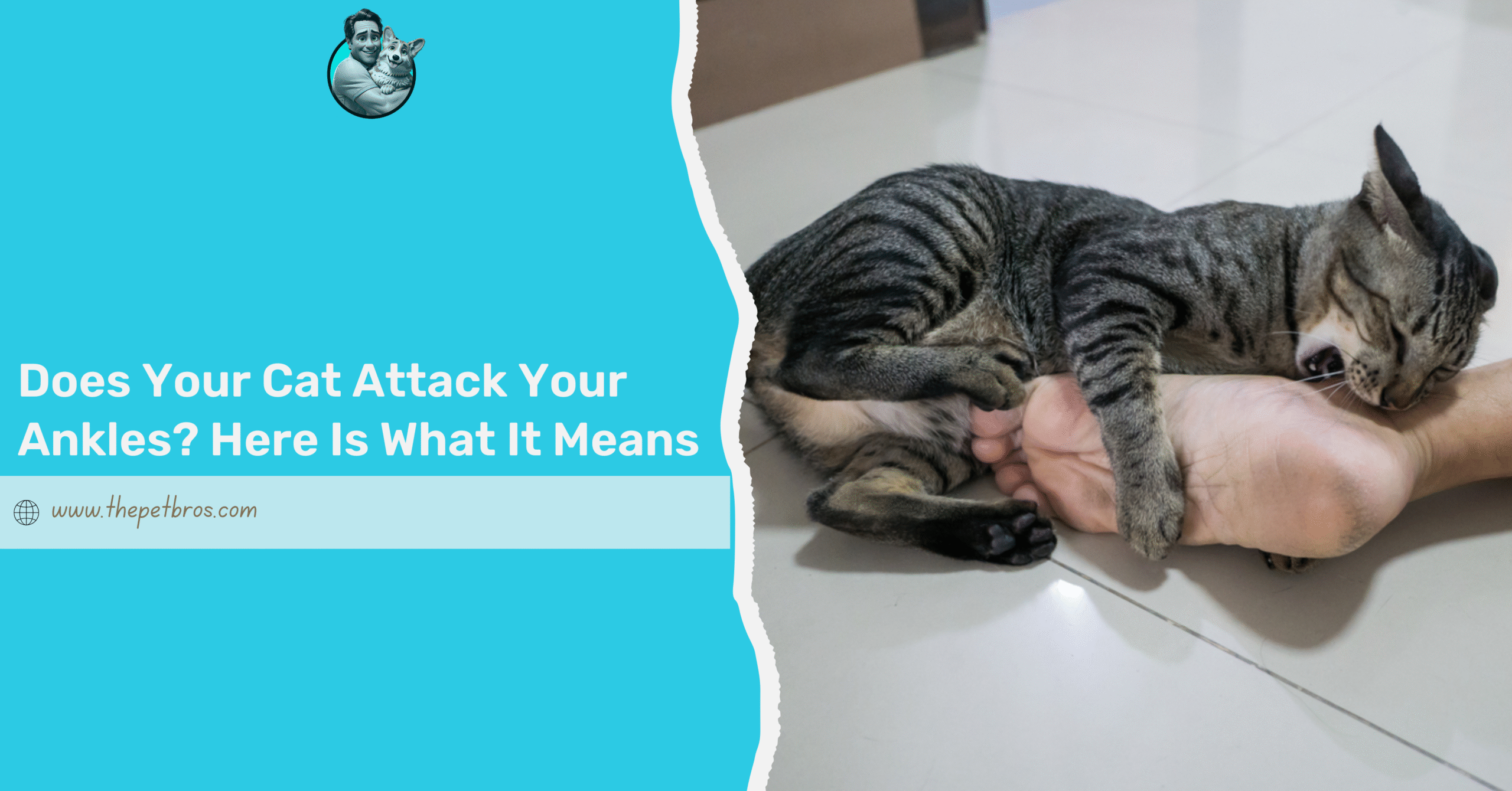Let’s be honest, if cats had a signature look, the gray tabby cat would be wearing it. Sleek, striped, and always acting like they’ve just caught you doing something embarrassing. They are the ones who somehow manage to look majestic while stealing your sandwich and knocking your drink off the table. Gray tabbies have the air of a cat that knows exactly what you’re thinking and is already judging you.
However, beneath all that smug charm is a lot more than meets the eye. Did you know their coat pattern comes straight from wildcats? Or that one of them launched the stuffed toy industry? Gray tabby cats have a legacy, a fanbase, and we are here for it.
In this article, we’re unpacking 10 surprising facts about the gray tabby cat that will make you see them in a whole new light.
10 Surprising Facts About the Gray Tabby Cat
1. Their Patterns Are Inherited From Wild Ancestors
Have you ever looked at your gray tabby cat lounging in the sun and thought, “You’d never survive in the wild”? Well, turns out their signature stripes are actually a throwback to their ancestors who did survive in the wild. The tabby pattern; those swirls, spots, and classic tiger-like stripes come from African and European wildcats.
These natural patterns acted as camouflage, helping them stay hidden from predators or sneak up on prey. Even though your tabby cat is more likely to stalk a snack cupboard than a savannah, their coat still carries that bit of survival history.
2. That Iconic ‘M’ Has a Mythical Backstory
Every gray tabby cat seems to have a bold, mysterious ‘M’ right in the middle of its forehead, like they’re part of a secret society. But did you know that this marking isn’t a coincidence?
While science says it’s just part of the tabby gene, folklore has a few more explanations. Some say it stands for “Mau,” the ancient Egyptian word for cat. Others believe the Virgin Mary blessed a tabby cat for comforting baby Jesus, leaving her initials behind. There’s even a tale where the Prophet Muhammad had a tabby who saved him from a snake, and in return, he marked the cat with an ‘M’.
It may sound ridiculous to you, however, whether you believe in myths or mutations, one thing’s clear: the gray tabby cat wears that mark with pride, and it suits their dramatic personalities.
3. Gray Tabby Cats Come in Multiple Coat Patterns
Not all gray tabby cats wear their stripes the same way. You’ve got your classic swirls, narrow mackerel stripes, spotted versions that look like a baby leopard, and even ticked tabbies that shine like they’re dusted in glitter.
Each pattern is like their feline fingerprint, and the fact remains that no two gray tabbies are exactly alike. It’s part of their charm. You never know if the one curled up on your sofa is the same cat that attacked your ankles during dinner prep, except you are absolutely familiar with them..
4. Their Eye Colours Vary as Much as Their Stripes
One gray tabby cat might have golden eyes that gleam like morning sunlight, while another could flash a striking green that feels like it sees right through you. Some even have copper or hazel eyes all depending on their genes and breed background.
This variety in eye colour adds to the mystique of the gray tabby cat. Their gaze can be warm, curious, or downright judgmental especially when you dare to move them off “their” cushion. Just like their stripes are distinct, tabby cats also do not share the same eye colours.
5. Gray Tabby Is a Colour, Not a Breed
Despite how often people refer to them as a breed, a gray tabby cat isn’t its own separate breed. “Tabby” refers to their coat pattern, and “gray” just describes the colour. You can find this look across loads of breeds such as American Shorthairs, Maine Coons and British Blues.
This set of felines might also be known for exhibiting signs of always wanting attention. However, these characteristics they exhibit do not mean that they are a breed; their personalities could vary based on their genetics, their environment, or the experiences they’ve had over time.
6. The Agouti Gene Is Behind It All
Behind every sleek stripe and swirled pattern of a gray tabby cat is a little bit of genetics doing its magic. The agouti gene is what gives your gray tabby cat that classic “ticked” appearance, where each hair has bands of light and dark colour. This gene switches the pigment on and off as your cat’s hair grows, resulting in those gorgeous, multi-toned coats that make gray tabby cats look like walking pieces of art. It’s not just pretty to look at, it’s a link back to their wild roots. This gene helped them camouflage for survival long before they became your sofa’s favourite napper.
7. Their Temperament Depends on Breed, Not Colour
Do you think your gray tabby cat is clingy because of its coat? Not quite. While it’s tempting to believe that colour influences behaviour, a cat’s temperament is far more influenced by breed, upbringing, and environment than the shade of its fur.
A gray tabby might be a lazy lap-cat or a fearless explorer. What matters most is how it was raised and what sort of world it grew up in. So if your cat wants attention all the time or hides under the bed during thunderstorms, don’t blame the stripes. It’s personality, not pigment.
8. The Word “Tabby” Has Silk-Spun Origins
You might think “tabby” was just a fun nickname for stripy cats, but it actually comes from silk. The term originates from a district in Baghdad called Attabiyah, renowned for producing luxurious, striped silk. When the fabric made its way to Europe, people started using “tabby” to describe anything with a similar striped pattern, including cats.
Whenever you catch yourself admiring a gray tabby cat lounging across your sofa like royalty, just remember their name has roots in elegance and opulence. It’s a fashion statement passed down through trade routes and centuries.
9. One Gray Tabby Cat Inspired a Famous Toy in the 1800s
Long before stuffed animals filled toy shops around the world, a clever gray tabby quietly pawed its way into history. In the late 1800s, German entrepreneur Margarete Steiff, known for making felt pincushions despite being wheelchair-bound, designed what would become the world’s first soft animal toy.
Her muse was a real-life gray tabby cat named “Puss” who often kept her company in the workshop. This unassuming feline became the model for her first soft cat toy, stitched from scraps and inspired by a cat that was just minding its business.
Children loved it, and what started as a humble handicraft blossomed into the Steiff company, one of the most iconic toy brands in the world. Yes, the same one responsible for inventing the teddy bear.
10. They Have Their Own Holiday
Yep, you read that right, gray tabby cats have earned their own special day. National Tabby Day, celebrated on April 30, is dedicated to these cats. It’s the perfect excuse to spoil your gray tabby with extra treats, toys, and all the attention they can handle.
Whether it’s giving them an extra-long cuddle session or sharing their cutest photos on social media, this day is all about celebrating the striped wonders that light up our lives. Now you know what to do next April 30, don’t just treat your tabby like it’s another day, give them the royal treatment they deserve, and let the world know just how awesome these cats truly are!
Conclusion
Gray tabby cats, despite being quirky and judgmental, are always managing to keep us entertained. They’re full of character with a legacy that goes way back to their wild ancestors. You’ll regularly catch them stealing your spot on the couch or looking at you like you’re the one who needs a nap. There’s no denying that these cats are as fascinating as they are adorable. If you own a gray tabby cat, always remember that you’re sharing your life with one of the most iconic and loved cat personalities out there. And when National Tabby Day comes around, you’ll know just how to celebrate these little legends.
FAQs
What is special about gray cats?
Gray cats are often seen as calm and gentle, with striking silver-toned coats that make them stand out.
What makes a tabby cat unique?
Their patterns are genetically tied to ancient wildcats, and no two tabbies look exactly alike.
Are gray tabby cats more affectionate than other cats?
Not necessarily. Affection levels depend more on breed and socialisation than coat pattern.
Do all gray tabby cats have the “M” on their forehead?
Yes. The “M” is a common tabby trait, created by their genetics. It’s one of the easiest ways to spot a tabby pattern.
Do gray tabby cats shed a lot?
It depends on the breed. Longhaired tabbies like Maine Coons shed more than shorthaired ones like the American Shorthair.
Are gray tabby cats rare?
Not at all. They’re one of the most common tabby colours, but their variety and charm make each one feel unique.






